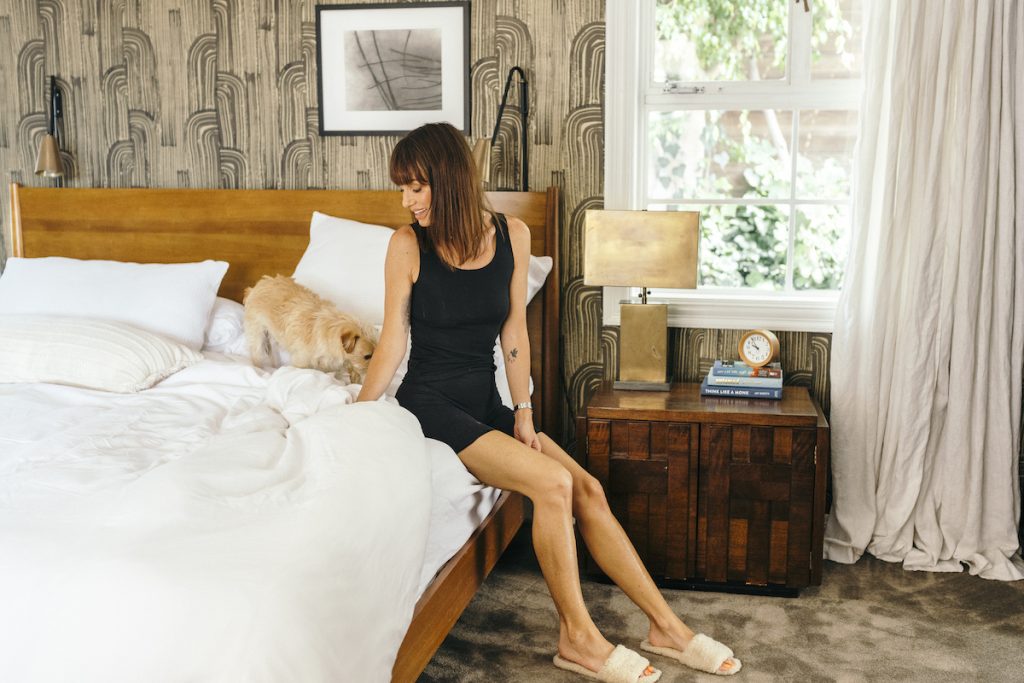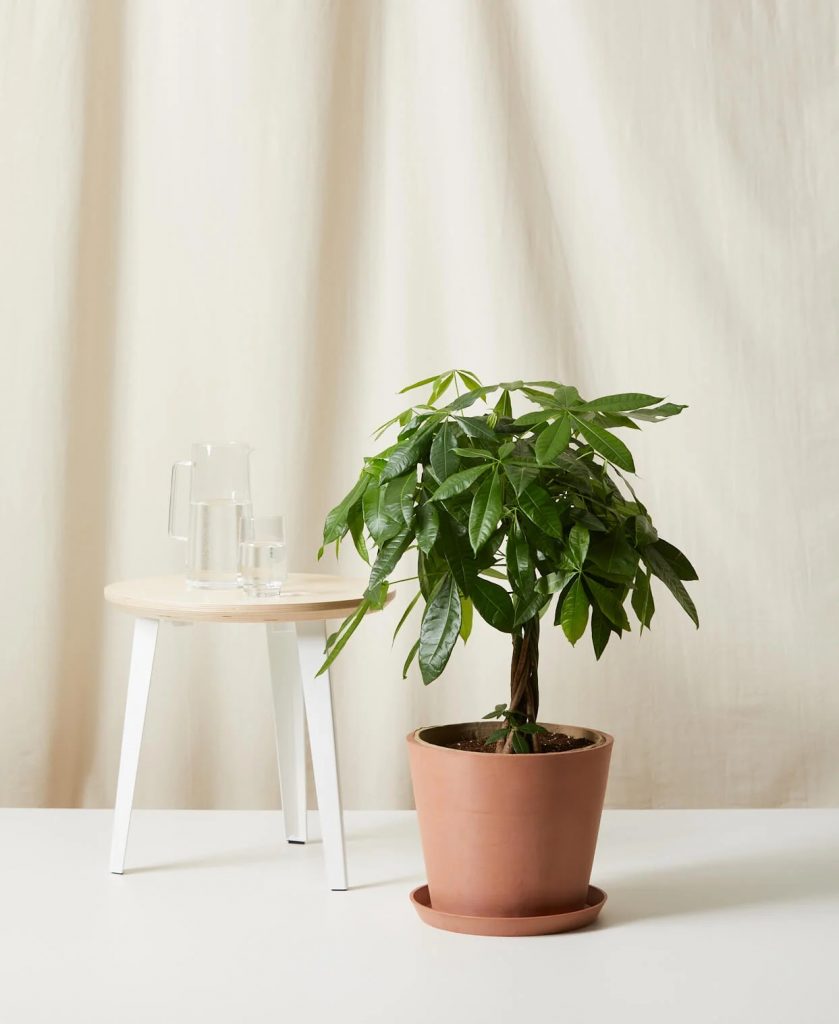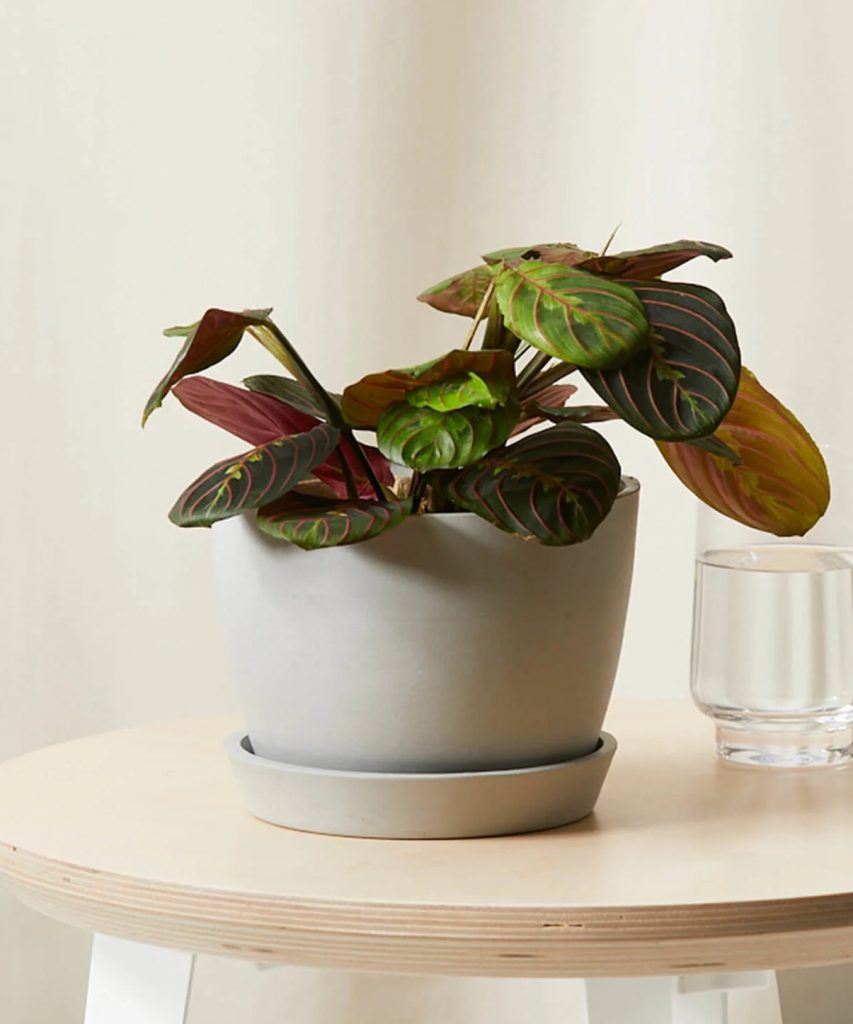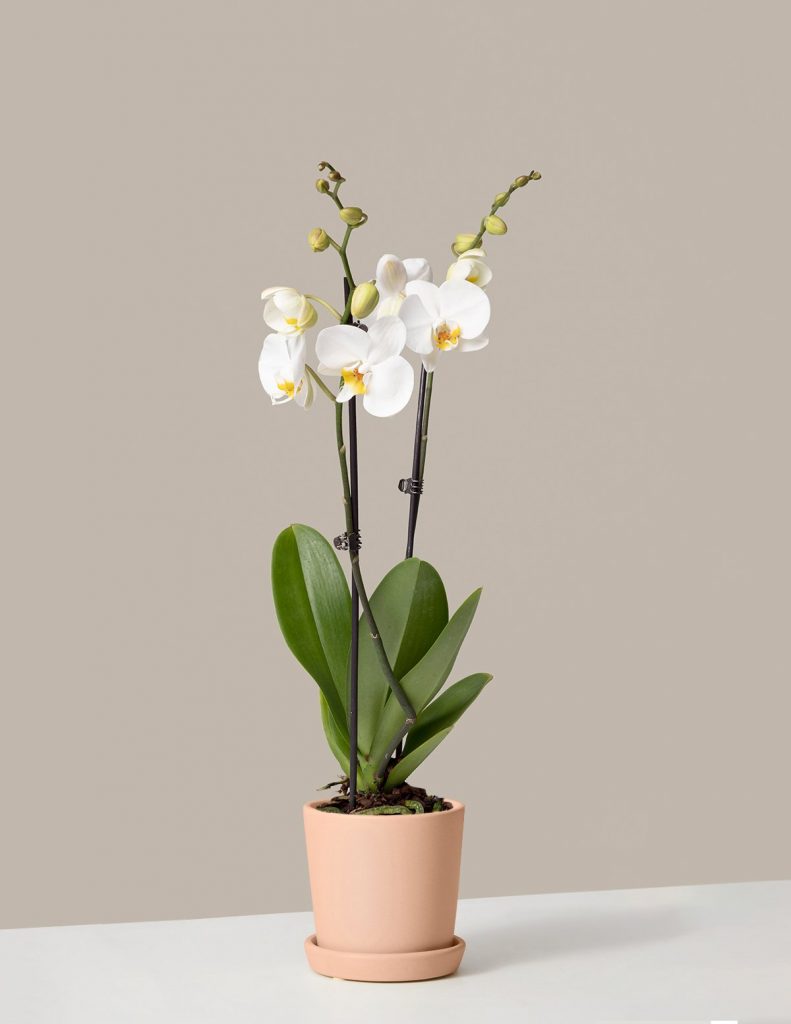Plants and pets are a mental health match made in heaven. It’s comforting to care for them just as it relieves stress to be surrounded by them. In a perfect world, our cats, dogs, and any plant we brought into our home would coexist perfectly. No leaves would be nibbled and all stems would go untouched. The reality, of course, is a bit different. As well-behaved as our pets may be, they are curious creatures. They explore and experience the world around them through sensory cues. That’s why, if you’re a plant and pet parent, it’s important (re: crucial) to know which plants are safe to keep around the house. To help you out, I got in touch with Erin Marino, editorial lead at The Sill, and tapped the team at Bloomscape for their expert guidance on which pet-friendly houseplants to bring into your space. Not only that, but the experts broke down everything you need to know about how to care for all the pet-safe greenery they recommended so that your plant and pet babies alike can thrive.
As someone who’s all about cultivating a life full of creature comforts, surrounding myself with animals and reminders of nature is one of the ultimate joys. I take untold amounts of pleasure in puttering around watering plants, and I’m more than capable of petting a cat for hours while it purrs away. Of course, I’m not alone. An already-rising interest in both flora and fauna skyrocketed during the pandemic. The 2019 National Gardening Survey showed that in the three years prior to 2019, houseplant sales increased 50% to $1.7 billion. And if you paid attention to the headlines (or were a subject of them yourself), you’ll know the number of passionate plant parents only grew as we spent more time at home over the past two years.
It’s true for pets as well: The ASPCA revealed that one in five households adopted a new cat or dog since the beginning of the pandemic. Conclusion? There’s a lot of us who have likely sought out the comfort of a pet or plant, and there’s a lot of us needing this guide to pet-friendly houseplants below. Stats aside, if you’re a pet owner and want a few more plant friends, we’ve got your list of the ones to get.
Why Are Some Plants Toxic to Pets?
Marino provided more insight into why certain plants are a no-no to have around your pets. Turns out, a little evolutionary defense plays a role. “Plant toxicity is a naturally occurring, chemical process of a plant defending itself against being eaten,” she explains. “Most plants create or secrete what is called secondary plant metabolites to defend themselves. They’ve been doing this for millions of years! For example, poisonous sap from the popular rubber tree (or Ficus elastica) protects it from many herbivores.” Plants that are pet-friendly? “Non-toxic plants don’t contain identified toxic principles,” notes Marino.
Now that you’ve been prepped with all the science, you can get to shopping (and learning more about) the best pet-friendly houseplants below.
Keep reading for all the info on the plants that can safely take up residence in your (and your pets’) home.
feature image by Kristen Kilpatrick
Peperomia Obtusifolia
Light Requirements: The Peperomia Obtusifolia can tolerate a wide range of conditions, from bright to low light. However, it does best in bright to medium indirect light.
Watering Needs: Water every 1 to 2 weeks.
More to Know: The Peperomia Obtusifolia, also known as the Baby Rubber Plant, is an easy-going houseplant characterized by its thick, succulent-like green leaves. A popular variety of Peperomia, it doesn’t need much to thrive. Under ideal conditions, it will flower indoors, producing narrow white spikes. — Marino
Money Tree
Light Requirements: Medium to bright indirect light. Turning your Money Tree every time you water it supports even growth and leaf development.
Watering Needs: Go for deep but infrequent watering. Money Trees thrive off extra humidity and regular mistings. The plant’s growth slows in the winter, so you won’t have to water it as much during the colder months.
More to Know: In need of a little luck? According to Feng Shui, the Money Tree is thought to bring positive energy to those who welcome it into their home. With their braided trunk cultivation, the Money Tree resembles both a tree and a palm, and adding one to your space will invite a tropical vibe that’s welcome any time of year. Not only will it keep your pets safe if they’re tempted to take a nibble, but the Money Tree is also one of the most effective houseplants for purifying the air in your home. — Bloomscape
Calathea Rattlesnake
Light Requirements: The Calathea Rattlesnake thrives in medium to bright indirect light, but can tolerate low indirect light.
Watering Needs: Water your Calathea Rattlesnake every 1 to 2 weeks.
More to Know: The Calathea Rattlesnake is a (visual) drama queen. It raises and lowers its leaves from day to night, a phenomenon called nyctinasty. (Check out a timelapse of its movements here.) The Calathea Rattlesnake has long, wavy green leaves with a pattern of deep green brushstrokes that resemble reptile skin, plus a deep purple underside. — Marino


Bird’s Nest Fern
Light Requirements: While this plant can tolerate the entire spectrum between bright and low indirect light, it does best when placed in lighting that’s somewhere right in the middle.
Watering Needs: Give your Bird’s Nest Fern weekly waterings. Place your plant near a humidifier to provide a little of the extra humidity it loves.
More to Know: If you’re looking for the perfect tropical houseplant, look no further than the Bird’s Nest Fern. Known for its tropical fronds that grow out of a central rosette, this plant will add a vibrant pop of green to any space all year long. Plus, it’s one of the easiest ferns to care for indoors. — Marino
Red Fittonia
Light Requirements: Bright, indirect light. If your Fittonia is placed in lower light, it can lose its vibrant color. And be careful not to give it too much light—overexposure can burn the leaves.
Watering Needs: We’ve got a water lover here! Go for consistently moist, but not soggy soil. If your Fittonia’s leaves are looking a little limp, that’s its way of telling you it needs a little H20. Water thoroughly and the leaves will come back strong.
More to Know: In the wild, Fittonias are found in rainforests under tree canopies. As an indoor plant? Fittonias are welcome in anyone’s home. If you’re new to plant parenting, Fittonias are a great choice as they’re extremely easy to care for. The interplay of their red veins set against the bright green leaves makes them a festive holiday gift for anyone on your list. — Bloomscape
Bamboo Palm
Light Requirements: Go for bright indirect light, however, your Bamboo Palm can also adapt to medium to low light areas. Be sure to keep it out of direct sunlight, you don’t want to scorch the fronds!
Watering Needs: When the top 50% of the soil is dry, it’s time to water. To control normal room temperatures and humidity levels, frequent misting, using a pebble tray, or placing a humidifier nearby can be helpful.
More to Know: The Bamboo Palm thrives on neglect. So if you’re the kind of person to forget about your plants, this is a great option. It’s a statement-making plant that can grow up to 8 feet tall. Maybe measure your ceilings before purchasing? — Bloomscape
Pilea Peperomioides
Light Requirements: This babe loves the sunshine! The Pilea Peperomioides thrives in bright direct light but can tolerate bright to medium indirect light.
Watering Needs: Water your Pilea Peperomioides every 1 to 2 weeks, allowing the soil to dry out between waterings.
More to Know: The trendy Pilea Peperomioides, also called the pancake or UFO plant, is known for its adorable coin-shaped leaves. A self-propagator, the Pilea Peperomioides produces sweet little babies or “pups” on its own, which pop up from the potting mix surrounding the mother plant. — Marino
Red Prayer Plant
Light Requirements: Bright, indirect light. Keep your Red Prayer Plant away from direct sun. If it gets too much direct light, its leaves will fade and the foliage could burn.
Watering Needs: Water when the top 25% of the soil is dry. Humidity is key when caring for a Prayer Plant, so make sure you mist your plant often.
More to Know: This is a popular plant for its striking appearance. The leaves are a soft dark green, with feathered, painterly-like light green centers and red veins. If you’re looking to add color to your desk, window sills, or shelves, opt for one of these. Fun fact: Not only are they non-toxic for cats and dogs, but they’re safe for humans as well (just in case you were tempted). — Bloomscape


Pet-Peromia
Light Requirements: Peperomias can tolerate lower light conditions, but they prefer bright, indirect light.
Watering Needs: Peperomias’ water absorption is similar to most succulents. They can store water in their leaves and can handle drying out a little every now and then.
More to Know: These plants are just about as hardy as it gets. They’re easy to care for and can handle a little (or a lot) of love from your pets. This trio of Peperomias (Peperomia Green, Peperomia Ruby Glow, and a Peperomia Happy Bean) will make a striking impact when added to any windowsill, table, or bookshelf. — Bloomscape
Xerographica (Air Plant)
Light Requirements: The Xerographica thrives in bright indirect light.
Watering Needs: In a bowl of room temperature water, soak your Xerographica weekly for about 15 to 30 minutes. Once it’s done soaking, shake off any excess water. This plant can also benefit from a little extra humidity. If you have a humidifier, try placing it nearby.
More to Know: If you’re potting soil-averse, look no further than an air plant, which does not require a planter to grow. This particular air plant, the Xerographica, is characterized by its silvery-grey curling leaves that form a rosette shape. — Marino
Bromeliad Summer
Light Requirements: Medium to bright indirect light. Your Bromeliad Summer can handle lower light conditions, but it’s at its best when placed in an east or west-facing window where it can soak up all the bright indirect light.
Watering Needs: You’ll want to let your Bromeliad’s soil dry completely between waterings.
More to Know: You might be surprised to know that the Bromeliad Summer is an air plant. It’s easy to care for and will add a cheery and bright pop of color to your home. While it made this list of pet-friendly plants be mindful that if you have sensitive skin, coming into contact with a Bromeliad can cause skin irritation. — Bloomscape
Prickly Pear Cactus
Light Requirements: Bright light to full direct sunlight. No additional humidity needed.
Watering Needs: Wait to water until the soil is 100% dry. Keep your Prickly Pear Cactus in room temperature environments.
More to Know: This is care-free plant care at its finest. Because the Prickly Pear Cactus is often found in desert climates, you’ll want to mimic the dry environment cacti love. Of course, even though it’s non-toxic to pets, watch out for its prickly spines and thorns. — Bloomscape
Phalaenopsis Orchid
Light Requirements: The Phalaenopsis thrives in bright indirect sunlight
Watering Needs: Water your Phalaenopsis weekly to biweekly.
More to Know: Affectionately called the beginner orchid, the popular pet-safe Phalaenopsis orchid is one of the easiest varieties of orchids to grow indoors as a houseplant. It typically blooms about once a year, for up to three months. After a blooming cycle, the flowers will wilt and fall off. This is the orchid’s way of storing energy to rebloom again next season. — Marino
Kimberly Queen Fern
Light Requirements: While the Kimberly Queen Fern prefers bright, indirect light, this plant can survive in direct sun if it’s watered regularly and its soil is kept moist.
Watering Needs: Get in the habit of giving your Kimberly Queen Fern a regular misting and be sure to keep it away from drafty areas. This plant thrives at temperatures above 60 degrees. Keep an eye out for any dead fronds as well, and remove them to encourage healthy, green growth.
More to Know: Low-maintenance, looks great in a hanging basket, and pairs well with nearly any décor? That’s the magic of the Kimberly Queen Fern. — Bloomscape


















